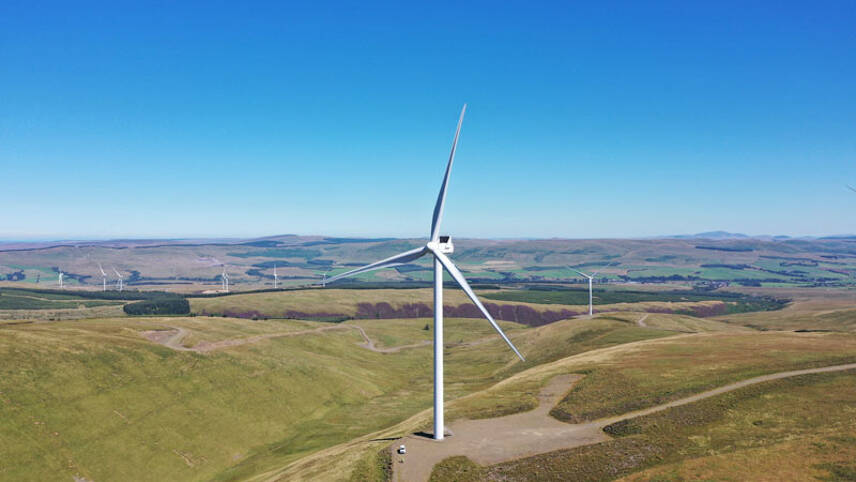Register for free and continue reading
Join our growing army of changemakers and get unlimited access to our premium content

Image: Community Windpower
Developer Community Windpower has confirmed that it is putting its Sanquhar II project on ice after projected development costs rose from around £300m to £500m.
The project to power around 350,000 homes only won planning approval in August. However, the Cheshire-based company said an 80% cost hike over the past two years has made it impossible to proceed.
Community Windpower managing director Rod Wood said the cost hike was largely due to increased taxes on electricity generators. Wood described the Electricity Generation Levy as “a total policy failure”.
The levy runs from January 2023 until the end of March 2028. It imposes a 45% levy on revenues from electricity sold above £75 per MWh.
The planned Sanquhar II project is comprised of 44 turbines and is Community Windpower’s largest scheme. Wood said it was “shovel ready with civil construction due to start next year and first-generation due summer 2025”.
A government spokesperson said: “The continued investment by generators in the industry is vital to our long-term energy security and this levy still leaves companies with a share of the upside they receive at times of high wholesale prices.”
Increased development and construction costs have also recently blighted the installation of offshore wind projects.
In July, Vattenfall put the breaks on the 1.4GW Norfolk Boreas offshore wind farm after seeing costs rise by up to 40%. The developer blamed higher inflation and capital costs for its decision to put the project on ice.
Onshore wind pipeline
A report by EnergyPulse published last week confirmed that the pipeline of UK onshore wind projects has grown by more than 1.5GW in the last 12 months to 38.54GW.
More than three-quarters (78%) of this pipeline, which ranges from early stages of development to fully operational projects, are in Scotland.
The report also forecasts that Scotland’s contribution to the UK’s operational onshore wind capacity will increase from 60% (8.3GW) in 2020 to 75% (20.7GW) by the end of 2030.
Conversely, England’s share is forecast to fall from 21% in 2020 to 11% in 2030.
The report was launched at a RenewableUK conference in Edinburgh, which also saw the signing of a new onshore wind sector deal between the industry and the Scottish Government.
The new deal, which sets out agreed measures between the industry and government, includes a commitment to halve the time that it takes onshore wind farms to go through planning to only 12 months.
The Scottish Government says from 2025 it will aim to determine Section 36 applications for new sites, and for the repowering of existing operational wind farms, within 12 months where there is no public inquiry. This deadline will be set at 24 months where there is a public inquiry.
The Scottish Government has also said that it will set a five-month goal of determining applications to extend the life of operational wind farms.
Rob Horgan for Utility Week
This article originally appeared on edie’s sister title Utility Week


Please login or Register to leave a comment.